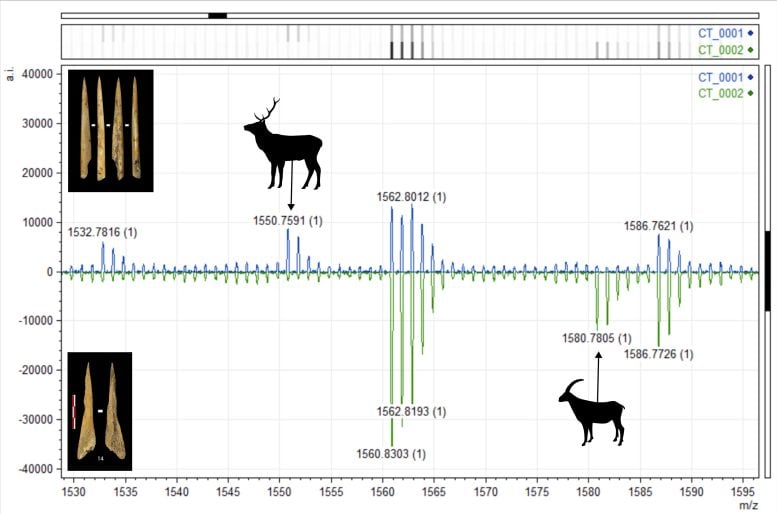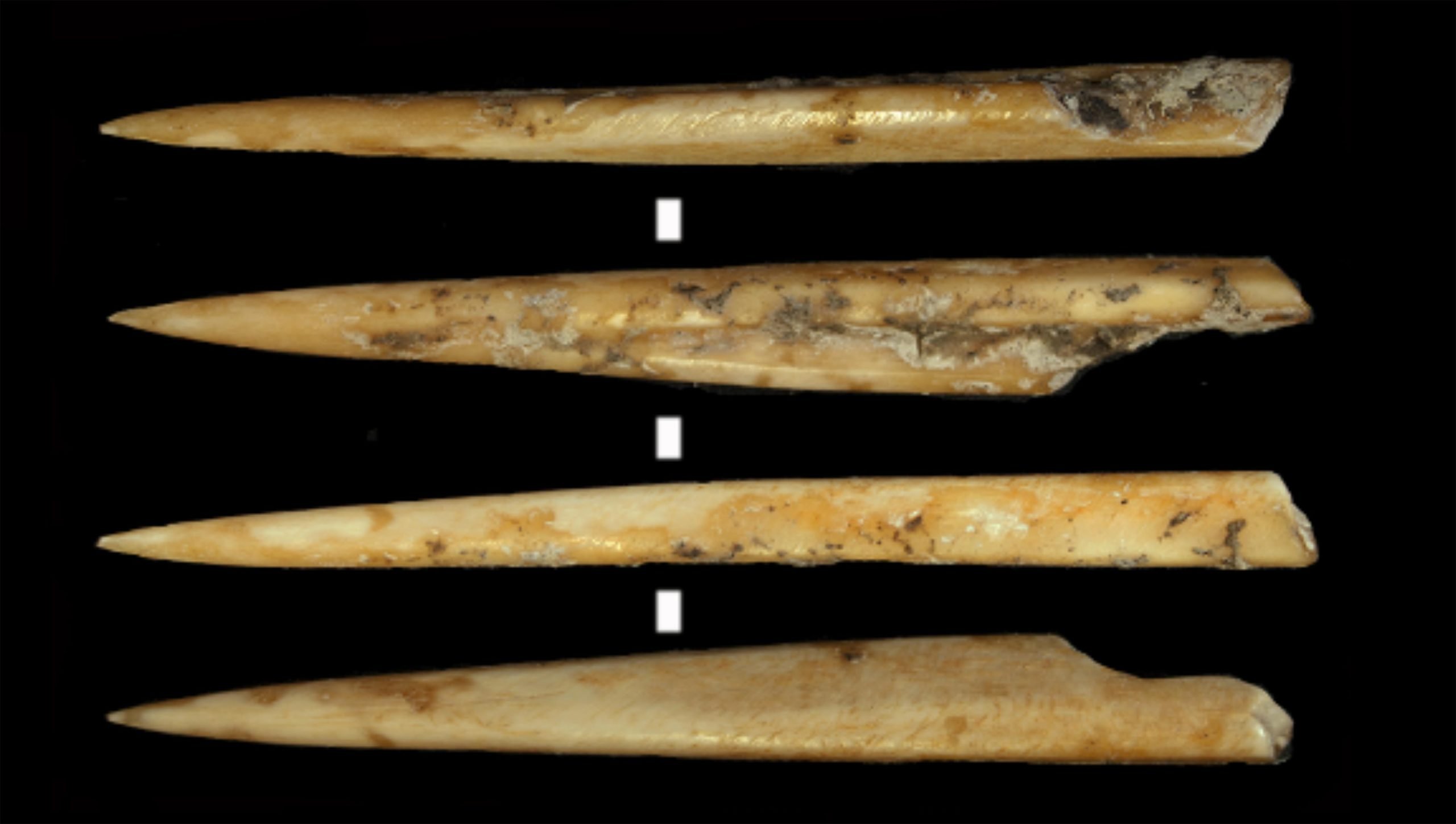Deer projectile tip (Cervus elaphus) analyzed in the study. Researchers have discovered that early Neolithic groups at the Coro Trasito site in the Pyrenees utilized specific bone selection strategies for toolmaking, particularly favoring deer for projectile tips. This insight was gained through an innovative combination of archaeozoological, use-wear, and paleoproteomic analyses, providing a deeper understanding of the relationship between tool function and animal species selection. Credit: Universitat Autònoma de Barcelona (UAB)
Neolithic societies at Coro Trasito favored deer for making projectile tips, indicating a nuanced approach to 
Illustration of the mass spectrometry analysis graph that has allowed the taxonomic identification of the species (cervids or goats) of the tools analyzed. Credit: Universitat Autònoma de Barcelona (UAB)
Species Selection and Cultural Significance
The analyses showed that the groups that inhabited the site 7,000 years ago chose sheep and goat bones for the production of bone tips to handle vegetables, but also used cervid bones (deer and roe deer) for a wider variety of artifacts. For the projectile tips identified, they chose deer bones.
In contrast to other studies based on the morphological study of artifacts, which suggest that sheep and goats were the species most commonly used in the production of bone tools, the study found that deer as well as sheep and goats were more equally selected for tool manufacturing. This greater species balance observed at Coro Trasito and the use of only deer bones for projectile tips leads the researchers to consider that this animal may have played a prominent role in ancient Neolithic society.
“Obtaining long bones from deer, probably through hunting, requires more effort than using long bones from domesticated animals. This is particularly interesting because of the large number of cervid bone tools identified compared to the number of cervid observed in the untouched bone deposits. This selection could be due, in part, to the properties of the bone, but also to the beliefs and values associated with this animal species,” says Jakob Hansen, first author of the study and predoctoral researcher in the Department of Prehistory at the UAB. “In any case, further research at other sites with the same combination of methods that we have applied here is required to explore this hypothesis.”
Enhanced Understanding Through Integrated Methods
The researchers highlight the methodological strength of the study. Previously, based on the study of morphological characteristics, deer bone artefacts had been detected in other Neolithic sites of the Iberian Peninsula, but this is the first time that the species were taxonomically identified and a strategy in the selection of the animals was directly evidenced.
In addition to the classical approach of archaeozoology, use-wear analysis was added to identify the specific uses of the tools and the materials with which they were produced by high-resolution microscopy, and taxonomic identification, carried out by mass spectrometry (ZooMS) through the evaluation of peptide biomarkers.
Conclusion and Future Research Directions
“Future research could benefit from the integration of these three approaches for a better understanding of the relationship between artefact types and the species selected for their production. This study is only the tip of the iceberg,” concludes Ignacio Clemente, a researcher at GAAM and at the Milà i Fontanals Institution for Research in the Humanities (DOI: 10.1371/journal.pone.0306448
The study was coordinated by the research group EarlyFoods from the Department of Prehistory of the Universitat Autònoma de Barcelona (UAB) and ICTA-UAB, under the framework of the European project ChemArch. Also involved in the study were researchers from the High Mountain Archaeology Research Group (GAAM, UAB and IMF-CSIC), the General Council of Aragón, and the University of Copenhagen.





















Discussion about this post